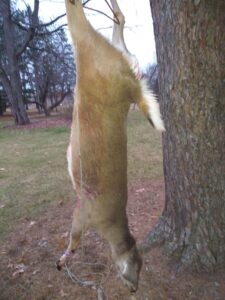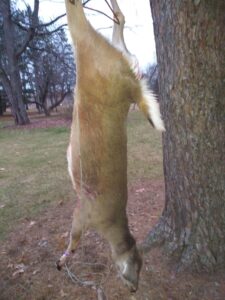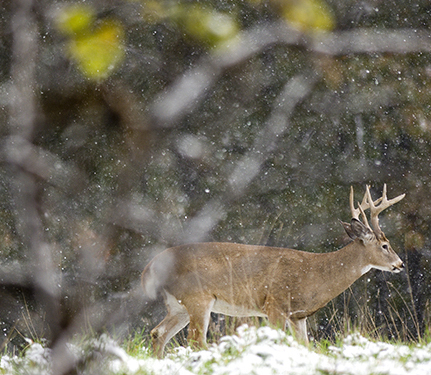Cashing In During Late Antlerless Season
By Glen Wunderlich
Charter Member Professional Outdoor Media Association (POMA)
Late antlerless firearms deer season is open now through January 1, 2024 for the entire Lower Peninsula of Michigan, whereas the Upper Peninsula is closed to this season. If there is room in the freezer, hunters can turn those unused licenses into something far more beneficial than a bowl of zero-calorie tag soup. If you’re going, here are a few things to consider.
For the most part hunters will opt to take a mature doe or two and will be wise to avoid buck deer without antlers. These antlerless bucks to protect can be those that have already shed their antlers or buck fawns that have grown to the size of yearling does – often confused with adult does. Although perfectly legal, let’s call it what it would be: a mistake. If we are attempting to balance the sex ratio between does and bucks, or simply desire to reduce the number of deer in the area, taking adult does is the goal.

Adult doe taken in late antlerless season 2023
The ability to separate live antlerless deer into two general age groups – fawns and adults – is obtainable for all hunters with a little knowledge and some practice. The three key characteristics are body size and shape, head size and shape, and animal behavior. Highly recommended is a quick-study video on YouTube by the National Deer Association: How to Identify Antlerless Deer in the Field. Just make sure to tote a binocular afield for positive identification.
Since it’s all about the meat, it’s always best to hang a deer for a few days for aging purposes. To take advantage of good hanging weather, overnight temperatures shouldn’t be so low as to freeze the meat. To process a frozen deer, it will have to be thawed out; refreezing it afterward can at the very least make it taste bad.
On the other hand, if a deer is allowed to hang in warmer weather, the formation of bacteria can ruin it. Ideal hanging temperature, therefore, should be between 33 to 45 degrees Fahrenheit. If not, arrange for walk-in cooler or get to processing.
Even if you opt to take your whitetail to a local processor, don’t do so without first removing the inner tenderloins. The vast majority of deer hunters fail to do this and unwittingly relegate the best part of the animal to be mixed into burger.
The deer tenderloin (also known as the inner loin or under loin) runs inside the back near the guts. There are two tenderloins per deer and they are very relatively small. They can be removed easily when the deer is hanging and should be taken out immediately so that they don’t dry out in the open air. Slice them into disc-like pieces and fry them lightly for a delectable sensation that can’t be topped.
Don’t forget to report your deer within 72 hours of harvest or before you transfer possession to a processor. Learn more about deer harvest reporting requirements at Michigan.gov/Deer and make sure to report your deer harvest at Michigan.gov/DNRHarvestReport.





